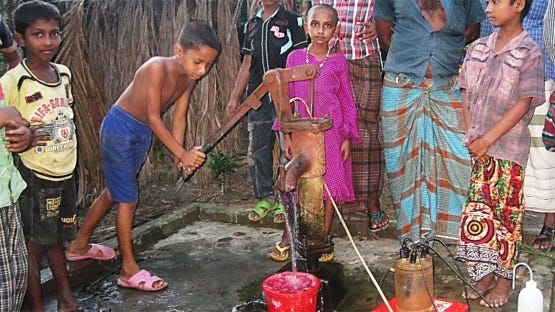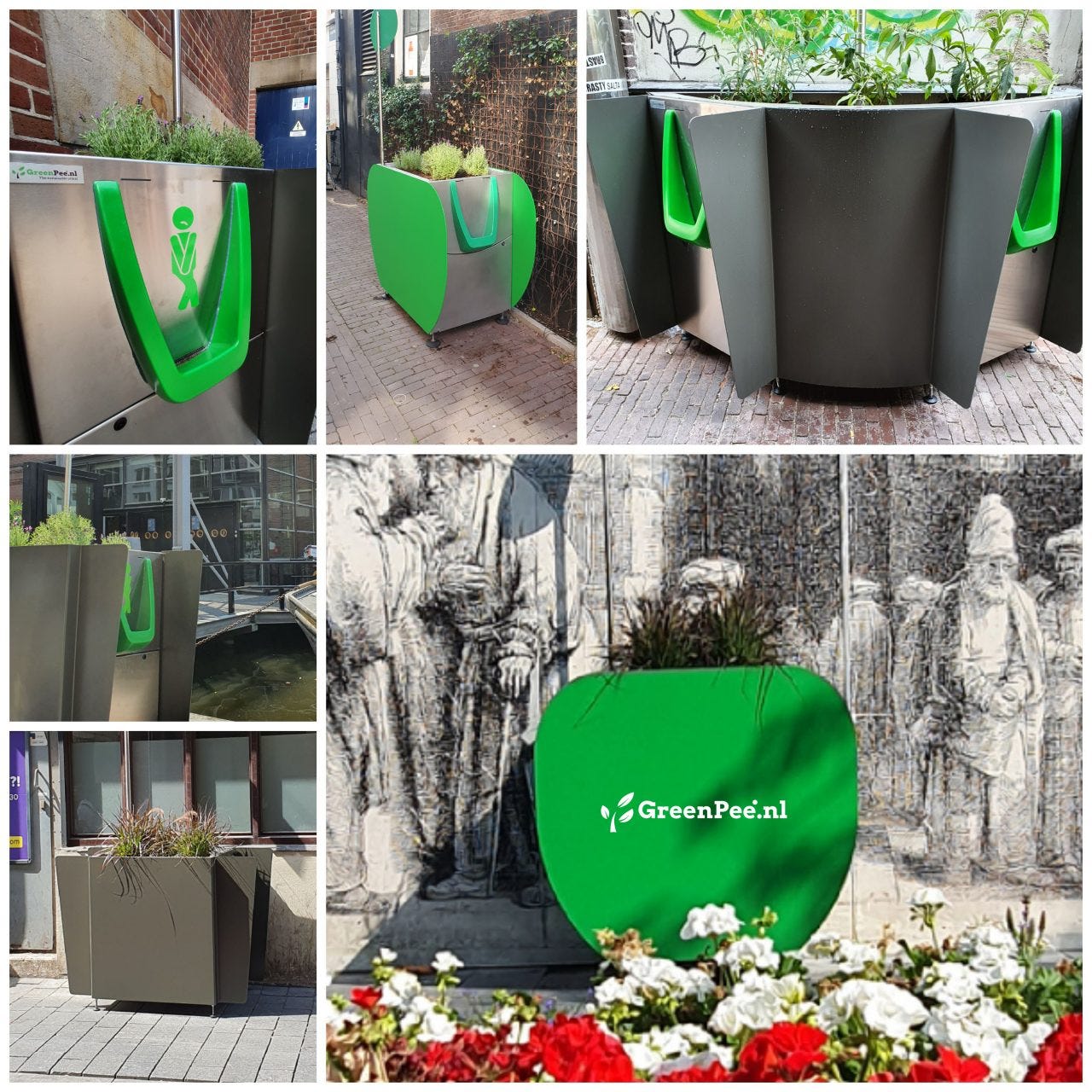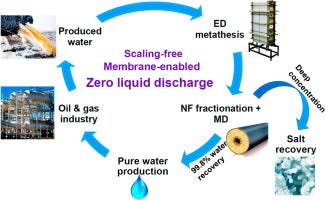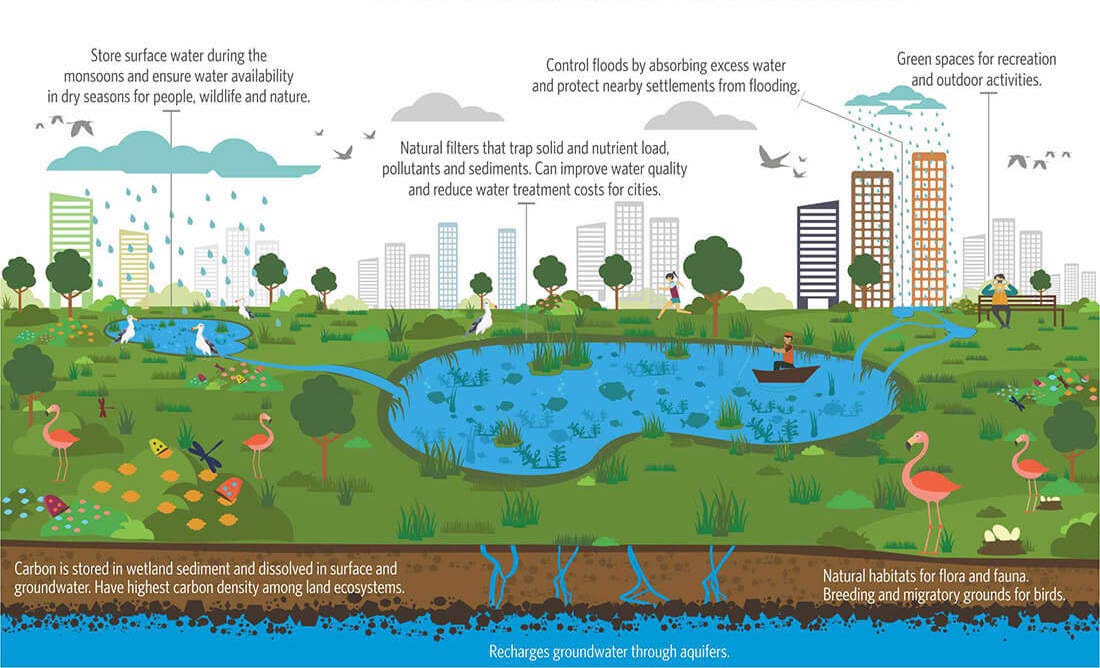Hello everyone!
This week we have a few bonus features and innovations to talk about. Enjoy, share subscribe and stay safe out there!
As always, if you have any suggestions, or if we got something wrong, please hit reply & let us know.
Disclaimer - the views expressed herein are ours and ours alone.
An architecture studio based in Hong Kong designed a civic center building that harvests water for the small Cambodian village of Sneung. The aptly named WaterHall complex consists of two structures built in loose, honeycomb brickwork. One building is an open hall, with an inner and outer half-wall, and a concave metal roof supported by concrete pillars. This was designed to funnel rainwater into a traditional ceramic vessel at the center of the structure.
Additionally, the studio hopes the project can influence the community to use fewer plastic bottles by storing sets of water-carrying ceramic vessels in the building. Another building is entirely closed to the public in order to preserve the interior pump, which brings water in from a nearby lake using a system of underground pipes, and the water filtration system through which it is purified.
Detecting and Separating micro-plastics in Water
Two different developments in the world of science this week - a group of scientists in Germany found out that most micro-plastics present in water or natural resources were under 20 µm (1 millionth of a meter) in size, and therefore required a new way to identify said micro-plastics. They successfully combined three techniques - Raman spectroscopy, microscopy, and Laser-induced breakdown spectroscopy (LIBS) into a single integrated device called the Hound. This device can do particle analysis and characterization, enabling researchers to accurately count, size and identify the elemental and chemical composition of particles even at a <20 µm size.

In conjunction with this news, another group of researchers in TU Delft, in the Netherlands, have devised a way to selectively separate micro-particles out of a liquid by virtue of their shape. By passing the fluid with particles through a narrow tube, the width of a human hair, they were able to calculate precisely which route the particle will travel in the tube. Then by using this identified formula, it was possible to know the route each particle type would take and thereby setup appropriate exit points along the narrow tube. The researchers used the analogy of the tube being like a ‘highway with separate exits’ for each particle type. Because of its current microscopic scale it has applications ranging from medical science, to pharmaceuticals to wastewater treatment.
Nuclear Isotopes to find untapped Groundwater
They say that necessity is the mother of all invention, and this one is no exception. Faced with acute clean water shortages in Bangladesh, scientists found that by testing and assessing the specific nature of isotopes they could estimate the age, vulnerability and sustainability of water resources. How you ask? - Some radioactive isotopes like tritium (3H), carbon-14 (14C) and noble gas radioisotopes, occur naturally in water bodies. As a particular isotope ages, the water body it is in will have a unique isotopic signature, or fingerprint, that provide clues about the origin and history of the isotope and thus the water body.

Water samples from surface water and groundwater at various depths are collected at several sites and undergo isotopic analysis. The chemical analysis reveals information about the source, renewability and recharge mechanism of groundwater. Via a study conducted from 2016-2019, the isotope data collected revealed the existence of long-term high quality drinking water in the deeper 300-meter aquifers where the water was found free of arsenic contamination and higher salinity, to supply safe drinking water to the rural population of the south-western Bangladesh.
People across the globe have been searching for workable solution to the nuisance of public urination. Now a company in the Netherlands have come up with a sustainable solution that is both stand-alone i.e. not requiring a connecting to the sewage system, and non-polluting. They call it the GreenPee. In this system the urine is collected in an internal tank which is either filled with odor absorbing hemp fibers or an organic amoniac blocker. After processing or composting, this urine-mixture becomes a phosphate-rich organic fertilizer.

The choice of processing system is based on location & maintenance frequency planned for the installed system. As mentioned it is fully self-contained (no water or sewage connection required), and has a capacity for 200-300 toilet visits. The GreenPee is equipped with an in-hydro system with a 30 liter reservoir for the collection of rainwater. This ensures that the plants only need to be watered sparingly, even in the dry season. The mixture of urine and hemp fibers or the extracted fertilizer can be delivered to companies in charge of municipal green areas that can use it as an organic fertilizer. The fertilizer can also be used for urban farming and roof gardens. Their system is said to save a minimum of 6 liter water per urine flush.
Recycling the Brine from Desalination
A team at Stanford have sought to address the issue of brine as a toxic discharge from the desalination process. Their device is intended to convert brine into useful chemicals and could make desalination environmentally benign. As an added bonus they say it will make the desalination process more affordable. No half measures for the folks at Stanford. Their device is based on electrochemical water splitting. They use electrical energy to trigger chemical reactions that split brine into positively charged sodium and negatively charged chlorine ions. These ions then combine with other elements in the system, to form sodium hydroxide and hydrochloric acid.

Sodium hydroxide (NaOH) & hydrochloric acid (HCl) can be used in different manufacturing and industrial processes but is potentially more useful in the main desalination process itself to pre-treat seawater (NaOH) before removing salts and for cleaning (HCl) at desalination plants. Making these chemicals as a byproduct would bring down expenses up to a third of total desalination expenses.
However all of this progress comes with its own ‘pinch of salt’ (see what we did there?) as the current chemical concentration that the device produces is 100 times lower than that needed for commercial use. That said as a proof-of-concept, this is very promising.
Zero Liquid Discharge (ZLD) from Oilfield Produced water
Produced water is the waste water left over from a oil fracking extraction process. Needless to say this is pretty polluted and costs a lot to clean or recover water from. Now a team of researchers from across China have come up with a an integrated membrane based system combining electrodialysis, nanofiltration and membrane distillation (ED-NF-MD) for highly efficient treatment of oilfield produced water.

Their system boasts of a 99.8% water recovery with a concentration of waste effluent into a practically non-liquid concentration of up to 373,000 mg/L. They go on to claim that to the best of their knowledge, such performance is the highest in terms of the final concentration and water recovery among various ZLD technologies available today.
In Other Good News
LifeStraw Go Steel - This company have been doing great things in the world of clean water for awhile now. They have taken it a step further by introducing their first stainless steel insulated bottle that also purifies water on the go.

From Beer to Waste to…Beer?! - Taking the trend forward a brewery in Canada has started brewing a blond ale using treated municipal wastewater to bring attention to the issue of water security. They hope that with water security becoming a big problem across the world, this initiative will help bring greater awareness about the fact this technology exists and that we can reuse water in many ways. Carpe Beerum!

Chennai lake system restoration - IT multinational Cognizant is giving back to their city Chennai by investing in restoring the suffering water bodies. They will spend $370,000 and lead investments form other groups to clean up the trash and pollution in Sembakkam Lake which they say is is one of Chennai’s 54 inter-connected lakes critical to the city’s water security and future resilience to floods and droughts. Below is the ecosystem they hope to one day re-invigorate.

That’s it for this week. Peace!!



